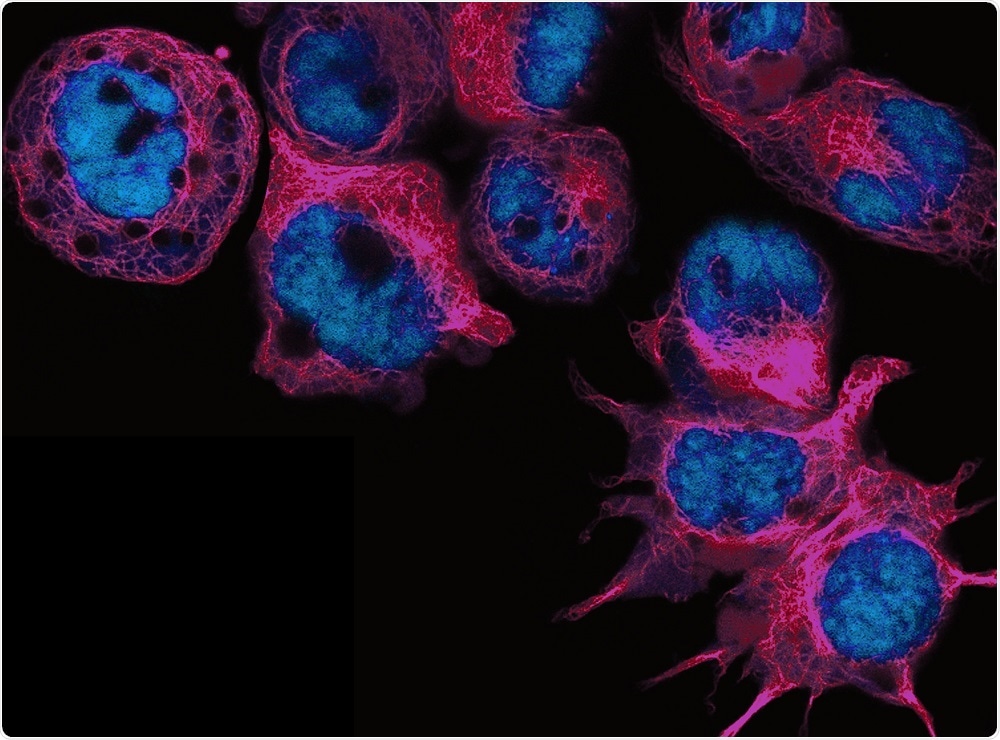Researchers in Sweden have developed a novel, cost-effective genomic method that can identify highly heterogenous tumors that tend to be aggressive and therefore require aggressive treatment, according to an article recently published in the journal Nature Communications.
 Vshivkova / Shutterstock.com
Vshivkova / Shutterstock.com
A common feature of cancer cells is a phenomenon called copy number alterations (CNAs). CNAs are major genomic changes (such as deletions or amplifications) in the number of copies of a gene in the genome. These genomic alterations significantly contribute to cancer progression by reducing programmed cell death (apoptosis) and promoting motility and angiogenesis.
Heterogenous tumors are particularly aggressive
Within a single tumor, cells located in different parts can carry various different CNAs. Heterogenous tumors that carry many of these different CNAs are usually particularly aggressive and are likely to reform more frequently than less aggressive cancers, even following aggressive treatment regimens.
Now, researchers at the Bienko-Crosetto Laboratory at Karolinska Institutet and Science for Life Laboratory (SciLifeLab) have designed a new genomic technique called CUTseq that can identify the number and type of CNAs across multiple areas of the same tumor at a much cheaper cost than the techniques that are currently used.
The team write:
Current multiplexing strategies for massively parallel sequencing of genomic DNA mainly rely on library indexing in the final steps of library preparation. This procedure is costly and time-consuming, because a library must be generated separately for each sample."
CUTseq may have many applications in cancer diagnostics
Senior author Nicola Crosetto, from the institute’s Department of Medical Biochemistry and Biophysics anticipates that CUTseq will be useful for many applications in cancer diagnostics.
She says multi-region tumor sequencing is going to be increasingly used in the diagnostic setting to identify patients with highly heterogeneous tumors that need to be treated more aggressively: "I believe that our method can play a leading role here."
The new technique can be applied to assess DNA extracted from multiple biopsies and even to assess very small sections of thin tissue, which is the type of sample that pathologists often use to diagnose cancer using microscopy.
The CUTseq method uses restriction enzymes and in vitro transcription to barcode and amplify genomic DNA prior to library construction, explains the team. The molecular barcode tagging of DNA extracted from many different regions of a tumor provides a detailed picture of the CNAs heterogeneity within the tumor after just one sequencing procedure.
Applications are not confined to cancer diagnostics
According to the researchers, applications of the new CUTseq method are not confined to cancer diagnostics. Senior researcher Magda Bienko says it could be used as a platform for authenticating cell lines and monitoring genomic stability in large cell line repositories and biobanks.
"It could also be applied in ecology, as an alternative to other reduced representation genome sequencing methods, such as RAD-seq, to assess biodiversity in a cost-effective way," she adds.
Journal reference:
Zhang, X., et al. (2019). CUTseq is a versatile method for preparing multiplexed DNA sequencing libraries from low-input samples. Nature Communications. DOI: 10.1038/s41467-019-12570-2.